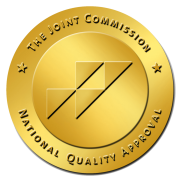Dr. Hser and colleagues at the University of California, Los Angeles analyzed data from the California Treatment Outcome Project (CalTOP), an ongoing study that has followed the progress of adult substance abusers treated at 43 outpatient and residential programs throughout the State since April 2000.
The patients received the addiction treatment services routinely provided by each program. These usually included group therapy, with an average of 69 drug-related and 51 alcohol-related sessions during the first 3 months of treatment. On average, the patients also received 22 sessions on dealing with mental health symptoms and 13 addressing psychosocial problems, including family, parenting, and employment.
More than 60 percent of the patients completed 3 months of treatment. Among all the patients in the study-those who finished 3 months and those who did not-the average reported frequency of methamphetamine abuse fell from 2.7 to 0.5 days per month from the start of treatment to 9 months later. The portion who were abstinent from all drugs rose from 55 percent to 87 percent in the same interval, and 68 percent were abstinent and also not incarcerated. Patients improved in all areas-drug and alcohol abuse; mental health symptoms; and employment, family, and legal problems-except one: men’s medical problems.
Dr. Thomas Hilton of NIDA’s Division of Epidemiology, Services and Prevention Research says these findings should reassure professionals working in the addiction, social services, and criminal justice fields that current therapies work for these troubled patients. “Dr. Hser’s findings suggest that treatments available in the community help meth abusers reduce drug abuse and start to get their lives back on track, echoing prior research,” he says.
Dr. Hser and her colleagues continue to analyze CalTOP data, aiming to determine the longer-term impact of therapy and identify ways programs can improve outcomes. “Enhancing psychiatric, parenting, and employment services would better match patients’ needs, and my team plans to study the relationship between help for these problems and longer-term outcomes,” says Dr. Hser. They also plan to investigate whether women-only treatment is more effective for pregnant methamphetamine abusers than mixed-gender programs.
“The field needs more research following meth abusers over time to get a picture of the long-term outcomes of treatment, relapse episodes, and whether these patients require additional support to sustain gains made during therapy,” says Dr. Hilton. “Because the availability of community health and social services varies across States, we cannot generalize the findings from one State, such as California. We need data from across the country,” he adds.
Source:
Hser, Y.-I.; Evans, E.; and Huang, Y.-C. Treatment outcomes among women and men methamphetamine abusers in California. Journal of Substance Abuse Treatment 28(1):77-85, 2005.
Volume 20, Number 5 (April 2006)

